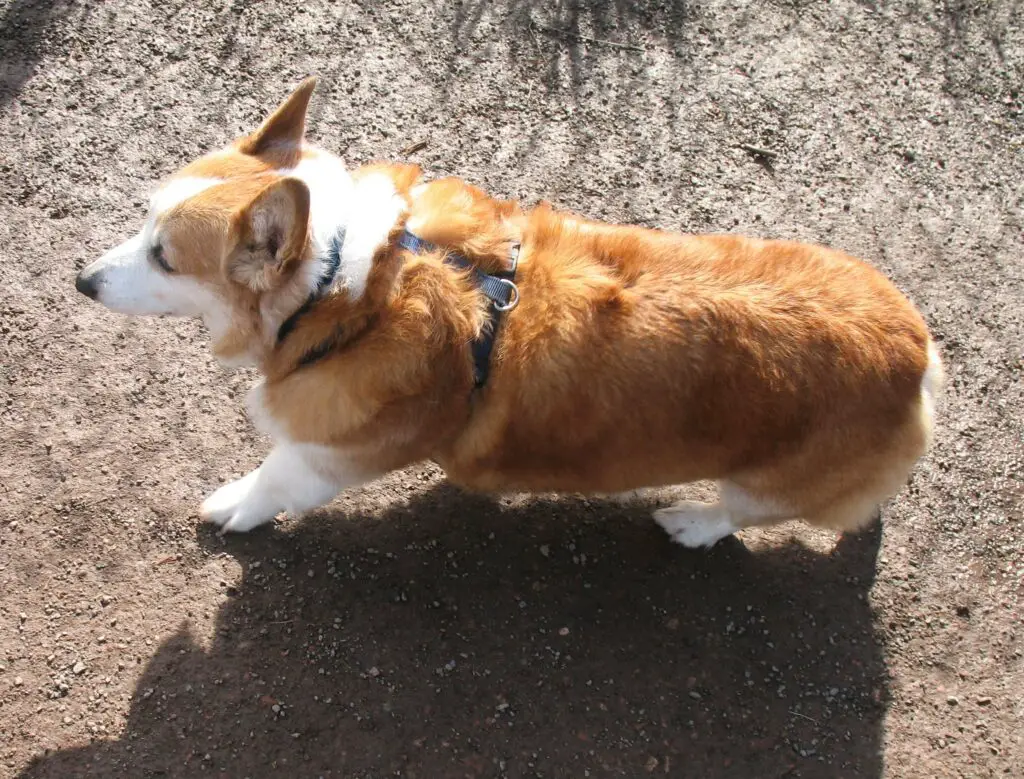Dogs are wonderful companions and beloved household pets. As such, it’s understandable that dog owners would be curious about the birth process of their furry friends.
Among the common misconceptions about dog birth is the belief that dogs only give birth at night.
While this perception is commonly held, it is not necessarily based on fact.
In this article, we will examine the question, “Do dogs give birth at night?” and explore the factors that influence dog birth, the timing of the birth, and the care that is needed during this process.
Do Dogs Give Birth At Night?

Yes, dogs can give birth at night or during the day. The timing of a dog’s labor is not based on a specific time of day, but rather on the individual dog’s body and hormonal changes.
Dogs, like many other animals, do not necessarily give birth exclusively at night. While this belief is common, the timing of a dog’s birth can vary significantly depending on different factors.
The perception that dogs only give birth at night is a common misconception. This belief likely stems from the fact that dogs tend to be more active during the day and may rest more at night, leading some to assume that labor would also happen during periods of rest.
However, the timing of a dog’s labor is primarily determined by hormone changes and the readiness of the mother’s body, which can occur at any time of day or night.
It is important for owners to be prepared for all possibilities and to have a plan in place for when their dog goes into labor.
This may include having a designated whelping area, clean towels and supplies on hand, and a contact number for their veterinarian in case of an emergency.
See also: How Many Times Can You Breed a Female Dog In a Year
Factors That Influence Dog Birth

Here are some of the main factors that can impact a dog’s birth:
Genetics
A dog’s genetics can play a significant role in the birth of her puppies. Certain breeds may have larger litters (or smaller litters) than others, and some breeds may be more prone to complications during labor and delivery.
Age
A dog’s age can also impact her ability to give birth. While dogs can technically give birth at any age once they have hit reproductive maturity, older dogs may be more prone to complications and may require extra monitoring during their pregnancy and labor.
Nutrition
Proper nutrition is essential for a healthy pregnancy and birth. It’s important to feed your dog high-quality food that is specifically designed for pregnant or nursing dogs, as well as provide her with plenty of water and essential nutrients.
Exercise
While it’s important to ensure that your dog gets regular exercise during pregnancy, it’s also important not to over-exert her. Too much exercise can lead to premature labor, so it’s important to find a balance between keeping your dog active and ensuring that she gets plenty of rest.
Environment
The environment in which your dog gives birth can also have an impact on the labor and delivery process. It’s important to provide your dog with a quiet, calm, and clean environment in which to give birth, as well as a comfortable whelping box or area in which to rest.
Health
Your dog’s overall health and any existing health conditions can also impact her ability to give birth. It’s important to keep up with regular veterinary check-ups and to monitor your dog’s health closely throughout her pregnancy to ensure that any potential issues are addressed in a timely manner.
By being aware of these various factors that can impact a dog’s birth process, you can help ensure a safe and successful delivery for both your dog and her puppies.
Be sure to consult with your veterinarian if you have any questions or concerns. Provide your dog with the care and attention she needs to have a healthy and happy pregnancy.
See also: How To Care For a Newborn Litter of Puppies [Complete Guide]
Timing of Dog Birth
The timing of a dog’s birth can vary widely based on several factors, including breed, litter size, and individual dog characteristics. The typical gestation period for dogs is around 63 days, but it can range between 58 and 68 days. However, in rare cases, some dogs may give birth earlier or later than this window.
As labor approaches, there are several signs to look out for such as nesting behavior, restlessness, and loss of appetite. Mothers may also experience a drop in body temperature by about a degree, which signals that labor is imminent.
It’s important to have an idea of the due date and to monitor the dog closely for signs of labor during this period, as complications can arise if the mother has difficulty giving birth. In some cases, veterinary intervention may be necessary to ensure a safe delivery.
Additionally, it’s crucial to have a whelping area set up before your dog goes into labor and to have emergency contact information for your veterinarian nearby. By being well-prepared and vigilant, you can help ensure a safe and timely delivery for your dog and her puppies.
Care During Dog Birth
As a responsible pet owner, it’s important to provide your dog with care and attention during the birthing process to ensure that both she and her puppies stay safe and healthy.
Here are some essential steps to take when caring for your dog during birth:
Monitor your dog closely
Keep a close eye on your dog throughout the birthing process and watch for any signs of complications or distress. Be prepared to call your veterinarian if necessary.
Provide a comfortable whelping area
Your dog will need a comfortable area to give birth and care for her puppies. Ideally, this area should be quiet, warm, and free from distractions. You will also need to provide plenty of clean towels and blankets for bedding.
Support your dog during labor
As your dog enters labor, she may become agitated or anxious. You can help calm her by staying close and providing reassurance. Gentle stroking and soothing words can help keep her calm and focused.
Assist with the delivery
As the puppies are born, you may need to assist your dog with the delivery. You can do this by gently removing any birth membranes from the puppy’s face and wiping them clean with a clean towel.
Be careful not to pull too hard on the umbilical cord. This can cause injury to the mother or puppy.
Watch for signs of postpartum complications
After the puppies are born, it’s important to monitor your dog closely for any signs of postpartum complications, such as fever, lethargy, or infection. If you notice any of these symptoms, contact your veterinarian right away.
Provide proper nutrition
Your dog will need a nutritious diet to provide milk for her puppies. Be sure to provide high-quality food that is specifically designed for nursing mothers.
By taking these essential steps, you can help ensure that your dog’s birth goes smoothly and that both she and her puppies stay healthy and safe. If you have any concerns or questions, be sure to consult with your veterinarian or a canine breeding expert.
In Conclusion
While the belief that dogs give birth exclusively at night is a common misconception, the timing of their birth can indeed vary.
Several factors, including natural instincts, environmental factors, and hormonal changes, can influence when a dog goes into labor.
During this process, owners play a vital role in providing care and monitoring their dog’s condition to ensure the health and safety of both the mother and her puppies.
Ultimately, with proper care and attention, the birth experience can be a precious and rewarding one for both the pet and owner alike.





Leave a Reply